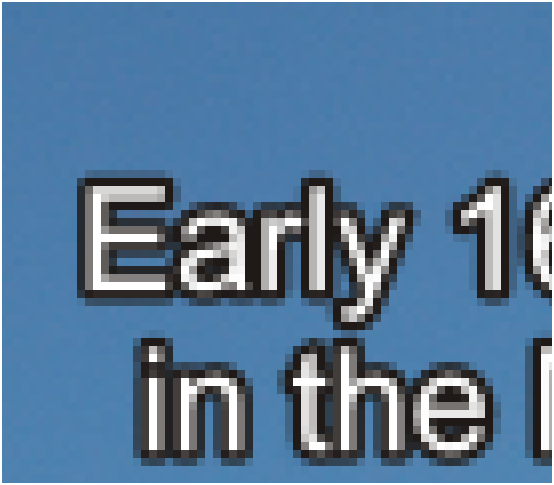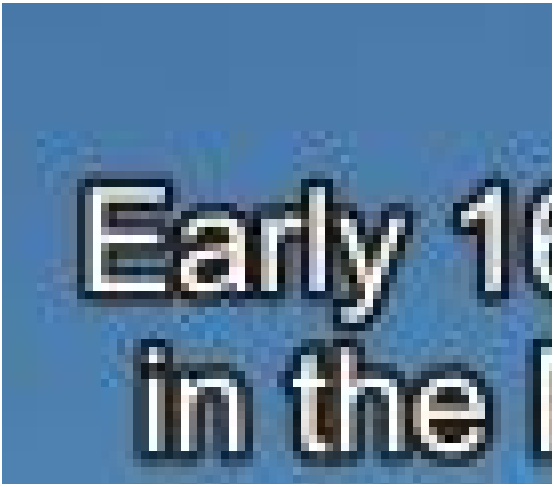- ECE Home
- Undergraduate Studies
- My Home
- Presentations
- Guidelines
If graphics are overlaid onto a photograph, the resulting graphic-photograph hybrid must be be stored as a PNG as opposed to a JPEG. Figures 1 and 2 show the Convento de Cristo together with graphical text indicating the various architectural styles. In Figure 1, the image is saved as a PNG while in Figure 2 the image is saved as a JPEG with a quality factor of 80. In Figure 2, distortion appears around the graphics overloaded onto the sky and the letters themselves are less sharp.

Figure 1. A hybrid photograph-and-graphic image stored as a PNG.

Figure 2. A hybrid photograph-and-graphic image stored as a JPEG with a quality factor of 80.
To see more clearly the problems associated with storing the image as a JPEG, consider Figures 3 and 4 which zoom in on the text in Figures 1 and 2, respectively. Even though the photographic portions of the two images are barely indistinguishable, the text is neither clear nor crisp when the image is saved as a JEPG.

Figure 3. A zoom on the text in Figure 1 (PNG).

Figure 4. A zoom on the text in Figure 2 (JPEG with a quality of 80).
One of the most apparent features of Figure 4 are the 8×8 blocks which are the result of the JPEG algorithm. These artifacts are outlined in Figure 5. Blocks which contain no pixels of the overlain text remain unchanged, while blocks with only three pixels of text (for example, the top-left block of the number "1") have ripples affecting the entire block. The original block is shown in the inset square with white trim.

Figure 5. A highlight of the 8×8 blocks used by the JPEG algorithm.